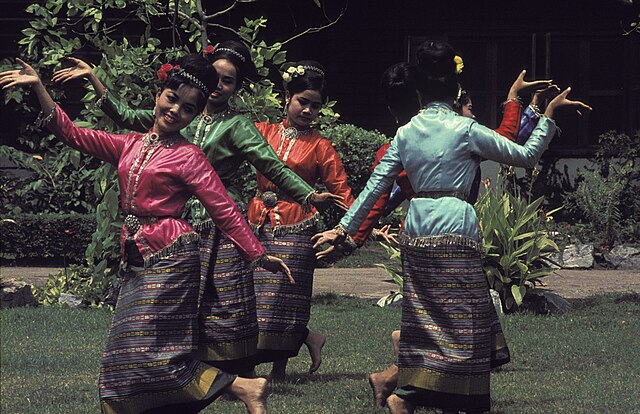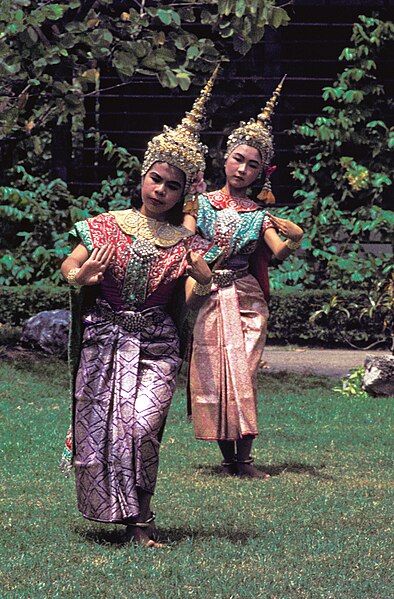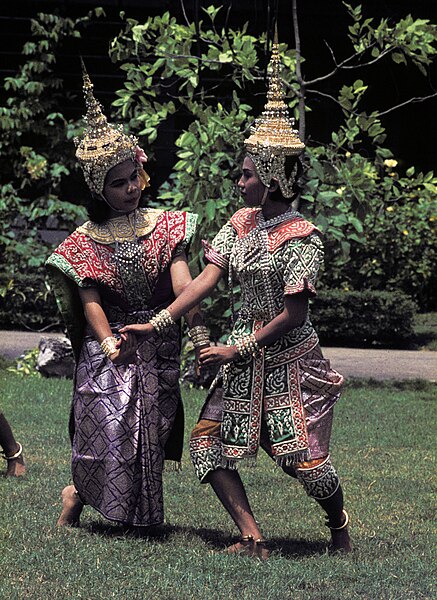
The Thammasat University Libraries have newly acquired a book about what makes people dance. Why We Dance: A Philosophy of Bodily Becoming is by Dr. Kimerer LaMothe, a dancer, philosopher, and scholar of religion from New York.
While many people think of dancing as something just done for fun, Dr. LaMothe argues that it is at the center of what it means to be human. By dancing, people try to be the best they can be. It makes us more aware – raising consciousness – and compassionate too. To some thinkers who define human beings as thinking minds, Dr. LaMothe suggests instead that dance means bodies in motion, expressing the energy of life (21). Bodily movement is the genuine reality, before thinking, and by dancing we evolve and gain knowledge. She quotes the famous American dancer and choreographer Martha Graham, who claimed:
- Dance is the hidden language of the soul.
- There is a vitality, a life force, an energy, a quickening that is translated through you into action, and because there is only one of you in all time, this expression is unique. And if you block it, it will never exist through any other medium and will be lost.
- Nobody cares if you can’t dance well. Just get up and dance. Great dancers are great because of their passion.
- I believe that we learn by practice. Whether it means to learn to dance by practicing dancing or to learn to live by practicing living, the principles are the same. In each, it is the performance of a dedicated precise set of acts, physical or intellectual, from which comes shape of achievement, a sense of one’s being, a satisfaction of spirit. One becomes, in some area, an athlete of God. Practice means to perform, over and over again in the face of all obstacles, some act of vision, of faith, of desire. Practice is a means of inviting the perfection desired.
- All that is important is this one moment in movement. Make the moment important, vital, and worth living. Do not let it slip away unnoticed and unused.
- Dancing is just discovery, discovery, discovery.
Without dance, we would be less aware of and informed about ourselves. For this reason, dance is a biological necessity. Since we dance with or around others, we learn how to exist with them by dancing. Ritual dances, or when dance is used as part of a religious ceremony, express humanity in a social and natural way.

Thailand and Dance
As all Thais know, dance is a major dramatic art form in the Kingdom. Thailand has folk and regional dances, such as Fawn Thai from the north, Sri-Nuan from central Thailand, and Manohra from the south, as well as classical dance drama such as Khon and Lakhon Nai. These court entertainments eventually were joined by a more popular folk dance theater, Likay. Thai traditional folk dances express important aspects of life and the world.
There are also places to learn formal dance such as the Bangkok City Ballet and Dance in Bangkok.
What dance can do.
In 2014, The Nation reported that a young hip-hop dance group, The Zoo Thailand, featuring Napatsara Ploysupaphol, joined the International Labor Organization (ILO) in a campaign to end child labor. In October of that year, the ILO’s International Programme on the Elimination of Child Labour (IPEC) was staged at CentralWorld. To protest child labor especially in the fields of agriculture and shrimp and seafood processing, The Zoo Thailand’s choreographer Pattanapong Suwanwong created interpretive moves, as he told The Nation:
I use the fast moves of hip-hop to depict children who have opportunities to have fun and be children. The slow moves of contemporary dance are uncomfortable to watch. It makes you hold your breath. It’s like the plight of child labour. When I was younger, I thought I was helping those children by buying flowers and other things they sold. When I grew up, I started to question my own actions. I wondered whether I was encouraging child labour instead. I wonder if I see a child working, what would I do? How would I help? Would I tell the police? Then what? I myself don’t know what is the best way out. So, this is a good chance for me to help, raising awareness of child labour. What I can do is to put on this show.
Fans of televised talent shows know that Thai dancers can quickly win fame. Last year, the “Thailand’s Got Talent” show featured dancers from a school in rural Phu Khieo district, Chaiyaphum, who won the competition. Sawit “Ball” Prathumkaew, a member of the group, stated:
Dancing must come from the heart and soul, because it is the communication of emotions.
The group’s coach Dechapat “Tae” Saimano explained:
I wanted to promote the culture of Tai Phu Khieo and Phu Khieo district, so I mixed their folk dance with hip-hop moves such as locking and popping. I didn’t expect our show, which is typically Isaan, to win the attention of judges or the audience. Now I think it’s become the Thai people’s property. Ball is outstanding in his Isaan dance, and our Thai-Danish member Nicky is also superb. The response was way beyond our expectations.

Other venues
Dance devotees also look forward to the annual International Dance Festival Thailand which allows audiences to experience a range of world styles and traditions. Last year’s festival highlighted performers from Singapore, Malaysia,Turkey, Italy, and Israel, as well as the Kingdom. Workshops and masterclasses make the festival an event open to public participation, and not just for spectators. In a comparable approach, in 2013 performances by New York’s Battery Dance Company and 108 Thai students. The students were chosen by the event’s co-organizer RumPUREE World Dance Studio. When not dancing, they study at such educational institutions as the Golden Jubilee Royal Goldsmith College, Holt Salathai Foundation, Human Development Foundation, Islamic College of Thailand, Centre for the Protection of Children’s Rights Foundation and World Vision Foundation of Thailand.
A more formal and traditional style was experienced last year when the Austrian Embassy presented an evening of Viennese waltzing at the Siam Kempinski Hotel in Bangkok.

(All images courtesy of Wikimedia Commons).
